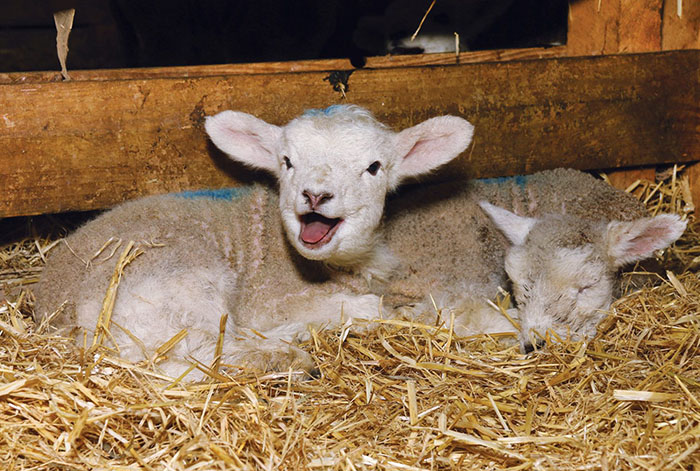Whether rearing orphan or triplet lambs that have been neglected by their mother, or bringing in lambs onto your property, rearing lambs can be a fun and rewarding experience for all and is a great way to increase flock size on a lifestyle property.
Treat them like babies and you can save money by not needing a sheep dog because your flock will come by name when you call them or rattle a feed bucket.
Ewe lambs are good to buy if you want to build up a flock.
Housing can have a huge impact on lamb health. Young lambs benefit from shelter and can suffer if housing is unsuitable. Pneumonia is generally a man-made disease caused by poor housing. Ensure the housing is dry and draught free.
A quick test is that you should be able to have a lit candle that doesn’t blow out at lamb
height.
Housing should be adequately ventilated with no ammonia smell at lamb height. Get down on your hands and knees and check.
A lamb milk replacer designed for lambs provides a reliable and consistent solution. Calf milk replacer is not ideal as the copper and lactose levels may be too high for lambs. Mix up the milk replacer according to the manufacturer’s instructions and do regular checks to ensure you are mixing up the milk correctly (get some kitchen scales and measuring jugs for accuracy).
Lambs prefer less volume of milk in more feeds during the day, as it is closer to their natural suckling behaviour.
If feeding using multi lamb feeders or bottles, be prepared to feed lambs three to four times a day (depending on your system and age of lambs).
Ensure you watch out for slow and fast feeders and rearrange lambs into their respective groups to ensure there is less competition at feeding time.
Do not allow lambs to ‘guts out’ and consume too much milk in one sitting. If using multi lamb feeders, watch the lambs feed and pull them off as they begin to become overfull. Lambs that over eat in one sitting can develop abomasal bloat, which can kill very rapidly.
Adding yoghurt to milk has been found to reduce the severity and incidence of bloat so is a good option to consider if you are having issues with bloat – especially when lambs get to three to four weeks of age.
Also, consider hard feeding. Hard feeds are extremely important for rumen development and a smooth weaning. Offer a hard feed (e.g. lamb pellets or muesli) from day one. This ensures the lambs get used to the taste of the feed.
Intakes will be small at first but will increase as lambs get older.
It’s best to go for a lamb specific feed, as it is better suited for lambs as opposed to a calf feed, which may be too high in copper. Go for a lamb feed with a high protein level of 18 to 20% (to ensure optimum animal growth) and grain based (for easy digestion to stimulate rumen development).
Keep feeding troughs clean and don’t put lots of hard feed out and leave it to go musty and contaminated by vermin/birds. A small amount of fresh feed every day is best and increases the amount offered to match intake.
After feeding milk, lambs have a strong desire to consume so putting some pellets in their mouths can get them used to the taste and texture of hard feed.
-Farmlands


